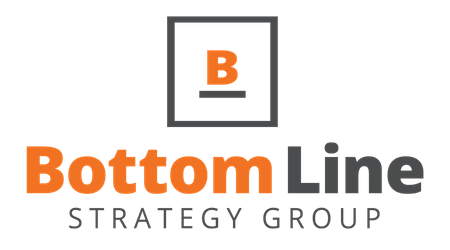The Complete Guide to Digital Transformation: Strategies, Benefits, and Implementation
Digital transformation is like learning a new language for your business - it's all about speaking "digital" to better connect with your customers. It reboots old ways of doing business with digital tools and strategies that make things smoother and faster. The fun part? Your company becomes more nimble, almost like a superhero, ready to adapt swiftly to any change in the market, just like the way water flows around rocks in a river. To take the first step on this adventure, visit our website.
Digital transformation is the integration of digital technology into all aspects of a business to fundamentally change how it operates and delivers value to customers. It's crucial for businesses to embrace digital transformation in order to adapt quickly to market dynamics, meet changing customer expectations, and improve overall operational efficiency.
Author: William Flaiz
The Definition of Digital Transformation
Digital transformation is more than just updating a few systems or adding new technologies here and there. It's a fundamental change in how a business operates and delivers value to its customers. This process doesn't happen overnight; it requires careful planning, investment, and crucially, a cultural shift within the organization.
When we talk about integrating digital technology into different aspects of a business, it goes beyond merely using digital tools. It involves challenging the status quo and revisiting old operating models. Businesses need to rethink how they function from the ground up, considering how they interact with customers, manage their operations, and innovate. It's a shift towards becoming more agile, efficient, and customer-centric.
The adoption of new technologies is a crucial aspect of digital transformation. This can include implementing cloud-based solutions, leveraging big data for insights, integrating artificial intelligence and automation for improved processes, and embracing advanced communication tools for seamless interaction both internally and externally. All these changes go beyond just implementing new software; they reshape how businesses operate on a day-to-day basis.
Consider an example: A traditional retail business embarking on digital transformation may not only create an online storefront but also implement sophisticated inventory management systems that utilize real-time data analytics to optimize stocking levels and automatically reorder products. They might also integrate chatbots to provide personalized customer service and leverage data analytics to predict trends and customer preferences.
In essence, digital transformation isn't just about adopting new technologies—it's about fundamentally shifting the way businesses operate, deliver value, and interact with their customers. It's as much about cultural change as it is about technological adoption.
As we navigate the transformative landscape of digital business strategies, let's now explore the myriad benefits and advantages that come with embracing digital transformation.
Benefits and Advantages of Digital Transformation
Digital transformation is akin to giving your business's operations a turbo boost. It's not just about keeping up with the latest technology trends; it offers a range of significant advantages that can elevate the overall performance and success of your business. One of the most immediate benefits is the improved operational efficiency. When you integrate digital technology into every aspect of your business, things get streamlined, tasks get automated, and productivity skyrockets.
Think about it this way: Instead of manual data entry, employees can focus on more meaningful tasks, innovation, and strategic decision-making. This translates to better use of time, reducing human error, and saving costs in the long run.
Enhanced Customer Experience
Let's talk about customer experience – it's a game-changer for businesses across all industries. Digital transformation paves the way for personalized interactions, seamless transactions, and proactive issue resolution - all leading to an elevated customer experience. By leveraging data analytics and AI-driven insights, businesses can anticipate customer needs, tailor their offerings, and provide exceptional service that keeps customers coming back for more.
This isn't just theory - look at successful companies like Amazon and Netflix who have completely reshaped consumer expectations through digital innovation. These companies have set a new standard for what customers demand from a business—an easy, personalized experience with quick resolution of any issues they might have.
Increased Agility
Change is constant in the business world—whether it's market shifts or evolving consumer behaviors. Digital transformation enables businesses to adapt quickly to these changes and stay competitive. This agility comes from more than just adapting to change - it comes from being able to predict market trends using robust data analytics.
Businesses that can analyze market data efficiently empower themselves with the ability to forecast potential opportunities and risks before anyone else has even seen them coming.
Cost Savings
Let's move on to cost savings. Initially, it might seem like a steep investment to digitize operations fully – but in the long run, it can lead to substantial cost savings. Think about how much money can be saved when productivity goes up because workflows are optimized or when wasteful processes are identified and eliminated.
Additionally, by moving data storage and other operations to the cloud, businesses can save significantly on infrastructure costs while gaining scalability and flexibility.
In conclusion, digital transformation isn't just a modern trend; it's an essential investment that offers tangible benefits such as enhanced efficiency, improved customer experience, increased agility in market responsiveness, and long-term cost savings. At Bottom Line Strategy Group, we specialize in helping businesses leverage these transformations through our expert consulting services available at our website Bottom Line Strategy Group, so they can thrive in today's rapidly evolving business landscape.
As we've explored the myriad benefits of digital transformation, it becomes evident that businesses are increasingly recognizing the need for necessary transformations and their objectives as the next crucial step in this journey toward modernization.

Necessary Transformations and Their Objectives
Digital transformation is an ongoing journey of adaptation and improvement. To navigate this landscape successfully, businesses must consider key transformations in their approach to technology, including upgrading IT infrastructure, implementing new software solutions, enhancing cybersecurity measures, and fostering a culture of innovation and continuous learning.
Each transformation serves a specific purpose, aiming to improve the efficiency and agility of the organization. Upgrading IT infrastructure ensures that the technical foundations of the business are robust and capable of supporting its operations. This often involves investing in modern hardware, cloud services, and network architecture to handle increasing demands on digital systems.
Implementing new solutions can revolutionize how a business operates, streamlining processes, enhancing data analytics, and providing valuable insights for informed decision-making. Improving cybersecurity measures is critical in an era where data breaches and cyber threats are prevalent. Businesses need to safeguard their digital assets from unauthorized access, data theft, and malicious attacks.
Creating a culture of innovation and continuous learning fosters an environment where employees adapt swiftly to evolving market dynamics. It involves nurturing a mindset that sees challenges as opportunities for growth and innovation.
Businesses today operate in a highly competitive digital landscape where rapid adaptation is essential for survival. Neglecting these necessary transformations could leave a business vulnerable to inefficiencies, security breaches, and missed opportunities for growth.
Consider a retail company that undergoes digital transformation by implementing a new inventory management software to streamline its supply chain processes, reduce inventory holding costs, and optimize its order fulfillment capabilities. This illustrates how each transformation has a clear objective tied to improving specific aspects of the business.
By identifying and pursuing these necessary transformations with clear objectives in mind, businesses can position themselves to thrive in the dynamic digital landscape. At Bottom Line Strategy Group, we specialize in guiding businesses through this process to achieve their specific business objectives effectively.
As businesses gear up for success in the ever-evolving digital realm, it's crucial to explore the impact and innovations driving their transformational journey.
The Impact and Innovations in Digital Transformation
The impact of digital transformation goes beyond changing how businesses operate; it shapes the way we interact, make decisions, and perceive our place in the world. One area where this impact is felt most keenly is in customer expectations. With the advent of digital transformation, customers are becoming more accustomed to personalized experiences, seamless transactions, and immediate responses. This shift has led to businesses needing to adapt quickly to meet these demands, fundamentally transforming the way they engage with their customers.
The integration of innovative technologies has been a driving force behind these changes, particularly artificial intelligence (AI), Internet of Things (IoT), data analytics, and cloud computing. These technologies are revolutionizing traditional business models and opening up new growth opportunities. For instance, AI is being used to analyze customer behavior and preferences on a granular level, allowing organizations to tailor products and services like never before.
In the world of IoT, everyday objects are being embedded with sensors that allow them to connect and communicate over networks. This means improved operational efficiency and the ability to gain valuable insights from data generated by these devices. And there's no underestimating the power of cloud computing – it's enabling businesses to scale rapidly, securely store massive amounts of data, and provide access to resources from anywhere.
It's important to note that while digital transformation offers numerous opportunities for growth and innovation, it's not without its challenges. Organizations must navigate issues such as cybersecurity risks, data privacy concerns, and the need for upskilling employees to work effectively with these technologies.
As we can see, the impact of digital transformation is profound and wide-ranging, touching everything from how businesses operate internally to how they engage with their customers.
Understanding the depth of digital transformation allows us to critically examine the contrast between traditional approaches and the new age of digitization in businesses.
Traditional Alternatives vs Digital Transformation
In the world of business, two paths emerge: the tried-and-true traditional methods and the forward-looking digital transformation. The legacy systems and processes of traditional methods, while familiar and reliable, can hinder a company's agility, scalability, and potential for innovation in the ever-evolving technological landscape.
Maintaining legacy systems means dedicating resources to keep outdated technology running smoothly, which can restrict a company's ability to adapt to changing market demands and customer expectations. On the other hand, digital transformation offers a more progressive approach. By leveraging modern technology and innovative strategies, businesses can modernize operations, enhance customer engagement, and drive sustainable growth. It's about bringing a business up to speed with the latest advancements in technology – from data analytics and cloud migration to artificial intelligence and agile teams.
For instance, legacy systems may prevent a company from collecting and analyzing customer data effectively. Digital transformation provides tools and processes that enable companies to gather meaningful insights from customer interactions. This information then allows them to tailor their products and services to better meet customer needs.
Embracing Change
Digital transformation involves a paradigm shift in thinking and operating. It requires organizations to challenge the status quo, experiment, and harness new technologies in innovative ways. On the other hand, traditional methods risk falling behind the curve, making it harder for businesses to keep up with the rapid pace of technological change.
Furthermore, traditional alternatives may not fully capitalize on emerging trends such as remote selling, cashless transactions, and rapid shifts in consumer behavior—changes that have become even more prominent due to global events like the COVID-19 pandemic. Businesses that fail to adapt risk losing relevance in the marketplace.
Customers now expect seamless digital experiences and quick responses – something that may be difficult for businesses relying solely on traditional methods. Digital transformation doesn't just future-proof a business; it also positions it to meet evolving customer demands effectively.
In our digital age, understanding the limitations of maintaining traditional alternatives is crucial for any organization seeking meaningful growth and sustainability. Our consulting services at Bottom Line Strategy Group specialize in helping businesses navigate this transition towards effective digital transformation strategies.
Strategies for Successful Digital Transformation
Digital transformation isn't just about employing new technologies; it's an opportunity to fundamentally change how a business operates and delivers value to its customers. Here are several strategies that can set you on the path to a seamless and successful digital transformation:
Setting Clear Objectives
Start by defining clear and achievable goals for your digital transformation efforts. These objectives need to be aligned with your overarching business strategy and should address pain points within the organization, such as improving operational efficiency, enhancing customer experience, or expanding market reach.
Engaging Stakeholders
Engaging stakeholders across all levels of the organization is crucial for the success of any digital transformation initiative. By involving employees, management, and external partners, you create a unified vision and garner valuable insights from diverse perspectives. This collaboration fosters a sense of ownership and ensures that everyone is on board with the changes being implemented.
Fostering a Culture of Innovation
An innovative and agile culture is essential for driving successful digital transformation. Encouraging creativity, risk-taking, and continuous learning empowers employees to adapt to new technologies and processes. Leaders play a critical role in nurturing this culture by supporting experimentation, acknowledging failure as part of the learning process, and rewarding innovative solutions that drive positive change.
Prioritizing Cybersecurity
As organizations embrace digital technologies, they become more susceptible to cyber threats. Prioritizing robust cybersecurity measures safeguards sensitive data, maintains trust with customers, and protects against potential disruptions due to security breaches.
Leveraging Emerging Technologies
Embracing emerging technologies such as artificial intelligence, machine learning, Internet of Things (IoT), and cloud computing can pave the way for transformative change within your organization. These cutting-edge tools offer opportunities to enhance decision-making processes, automate repetitive tasks, gain deeper customer insights, and unlock new revenue streams.
With these strategies in place, businesses can navigate the complexities of digital transformation effectively. By understanding the nuances of each strategy and their impact on organizational growth, businesses can adapt to the ever-evolving digital landscape with resilience and innovation at the forefront.
The journey through successful digital transformation requires not just strategies but also meticulous planning and implementation. Let's now turn our attention to a step-by-step guide for implementing digital transformation seamlessly within an organization.
Step-by-Step Implementation Guide of Digital Transformation
Implementing a successful digital transformation is no simple feat. It requires careful planning, resource allocation, and a clear roadmap. Here are the key steps to guide you through the implementation process:
1. Defining a Clear Vision
Begin by clearly defining the vision and strategic objectives of your digital transformation. This involves understanding what your organization seeks to achieve through digitalization and how it aligns with your overall business strategy. Consider the desired outcomes such as improved customer experience, enhanced operational efficiency, or new revenue streams. It's essential to communicate this vision across the organization - ensuring that everyone understands and supports the digital transformation journey is critical for its success.
2. Assessing Current Capabilities
Conduct a comprehensive assessment of your current technological capabilities, organizational culture, and existing processes. This analysis will help identify areas that require improvement and highlight potential barriers to successful digital adoption. By understanding where you stand currently, you can better determine what changes are needed to achieve your digital transformation goals effectively.
3. Developing a Roadmap
Developing a detailed roadmap is crucial in guiding the execution of your digital transformation initiatives. The roadmap should outline specific milestones, timelines, resource requirements, and investment estimates for each phase of the transformation journey. By breaking down the transformation into manageable stages, you can effectively track progress and ensure alignment with your strategic goals.
4. Piloting New Initiatives
Once the roadmap is in place, it's time to pilot new initiatives to test their viability and impact on your business operations. Launching pilot programs allows you to validate the effectiveness of new technologies, processes, or business models on a smaller scale before full-scale implementation. This approach minimizes risks and provides an opportunity to learn from early successes or failures.
5. Continuous Monitoring and Optimization
The work doesn't stop once new initiatives are launched - in fact, this is when continuous monitoring and optimization become crucial. Establish robust mechanisms for monitoring key performance indicators (KPIs), gathering feedback from stakeholders, and adapting strategies as needed based on real-time insights. Digital transformation is an ongoing process that requires agility and the willingness to continually evolve in response to changing market dynamics and customer needs.
For instance, at Bottom Line Strategy Group, we provide a comprehensive implementation framework that integrates these key steps into a tailored approach for each client. Our practical guidance ensures that businesses embark on their digital transformation journey with clarity, confidence, and a solid foundation for long-term success.
Implementing digital transformation is about being purposeful, meticulous, and adaptable throughout every stage of the process. By following these steps diligently, businesses can navigate their transformation journey with greater clarity and optimize their chances of achieving meaningful outcomes.
In essence, a successful digital transformation hinges on meticulous planning, dedicated execution, and dynamic adaptation – a continuous evolution towards realizing the strategic vision set forth at the beginning of the journey.

© 2024 Bottom Line Strategy Group
All Rights Reserved | Privacy Policy






